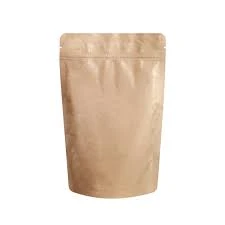- Afrikaans
- Albanian
- Amharic
- Arabic
- Armenian
- Azerbaijani
- Basque
- Belarusian
- Bengali
- Bosnian
- Bulgarian
- Catalan
- Cebuano
- chinese_simplified
- chinese_traditional
- Corsican
- Croatian
- Czech
- Danish
- Dutch
- English
- Esperanto
- Estonian
- Finnish
- French
- Frisian
- Galician
- Georgian
- German
- Greek
- Gujarati
- haitian_creole
- hausa
- hawaiian
- Hebrew
- Hindi
- Miao
- Hungarian
- Icelandic
- igbo
- Indonesian
- irish
- Italian
- Japanese
- Javanese
- Kannada
- kazakh
- Khmer
- Rwandese
- Korean
- Kurdish
- Kyrgyz
- Lao
- Latin
- Latvian
- Lithuanian
- Luxembourgish
- Macedonian
- Malgashi
- Malay
- Malayalam
- Maltese
- Maori
- Marathi
- Mongolian
- Myanmar
- Nepali
- Norwegian
- Norwegian
- Occitan
- Pashto
- Persian
- Polish
- Portuguese
- Punjabi
- Romanian
- Russian
- Samoan
- scottish-gaelic
- Serbian
- Sesotho
- Shona
- Sindhi
- Sinhala
- Slovak
- Slovenian
- Somali
- Spanish
- Sundanese
- Swahili
- Swedish
- Tagalog
- Tajik
- Tamil
- Tatar
- Telugu
- Thai
- Turkish
- Turkmen
- Ukrainian
- Urdu
- Uighur
- Uzbek
- Vietnamese
- Welsh
- Bantu
- Yiddish
- Yoruba
- Zulu
Understanding Cardstock Thickness in Millimeters for Better Crafting Choices
Understanding Cardstock Thickness A Comprehensive Guide
Cardstock refers to a type of paper that is thicker and more durable than ordinary paper. It is often used for a variety of applications such as business cards, invitations, and other craft projects. One of the critical factors to consider when selecting cardstock is thickness, typically measured in millimeters (mm). Understanding cardstock thickness not only aids in making informed decisions while purchasing but also ensures that the final product meets the specific needs of your projects.
What is Cardstock Thickness?
Cardstock thickness can vary significantly, generally ranging from 0.18 mm to 0.50 mm. The thickness of cardstock is a crucial factor as it influences the paper's weight, sturdiness, and printability. In general, thicker cardstock tends to be more robust and ideal for projects that require a substantial feel. For example, business cards, which must endure handling, are commonly made from thicker cardstock, often around 0.25 mm to 0.35 mm.
Common Thicknesses of Cardstock
1. Lightweight Cardstock (0.18 mm - 0.24 mm) This type of cardstock is suitable for applications like greeting cards, flyers, and scrapbook pages. While it offers some sturdiness, it is lightweight enough for easy handling.
2. Medium-weight Cardstock (0.24 mm - 0.35 mm) This is one of the most versatile weights used in various projects, including invitations, postcards, and promotional materials. It provides a good balance between durability and flexibility.
3. Heavyweight Cardstock (0.35 mm - 0.5 mm) Often used for business cards and specialty prints, heavyweight cardstock is ideal when a professional finish is required. Its rigidity ensures that the cards maintain their shape without bending easily.
4. Double-thick Cardstock (over 0.5 mm) This type is generally used for more durable products such as packaging materials or professional signage. The firmness can support printing without warping, making it a robust choice.
cardstock thickness mm

Choosing the Right Thickness for Your Project
When selecting the appropriate thickness for your cardstock, consider the following factors
- Purpose Determine what the cardstock will be used for. If it’s for a business card, a thicker cardstock might be preferable to convey professionalism. For flyers or informational brochures, a lighter cardstock can be adequate.
- Printing Method Different printing methods can affect the choice of paper thickness. Digital printing, for instance, can handle a wider range of cardstock weights compared to traditional offset printing.
- Finishing Options If you plan to use specific finishing techniques like embossing, foiling, or lamination, you may need to select a suitable thickness that will accommodate these processes without losing structural integrity.
- Cost Thicker cardstock typically costs more than lighter options. It’s essential to strike a balance between cost and quality, particularly for large print runs.
Conclusion
Understanding cardstock thickness, measured in millimeters, can significantly impact the quality and functionality of your printed projects. With various weights available—from lightweight options suited for casual applications to heavyweight designs ideal for professional purposes—making the right choice requires careful consideration of your project's specific needs.
Whether you are creating a simple greeting card, a stylish business card, or a creative scrapbook, knowing the right thickness will help you achieve the desired outcome. The right cardstock not only enhances aesthetics but also affects durability and feel, influencing how your audience perceives your work. Investing the time to understand and choose the right cardstock thickness is crucial for achieving optimal results in your printing endeavors.













